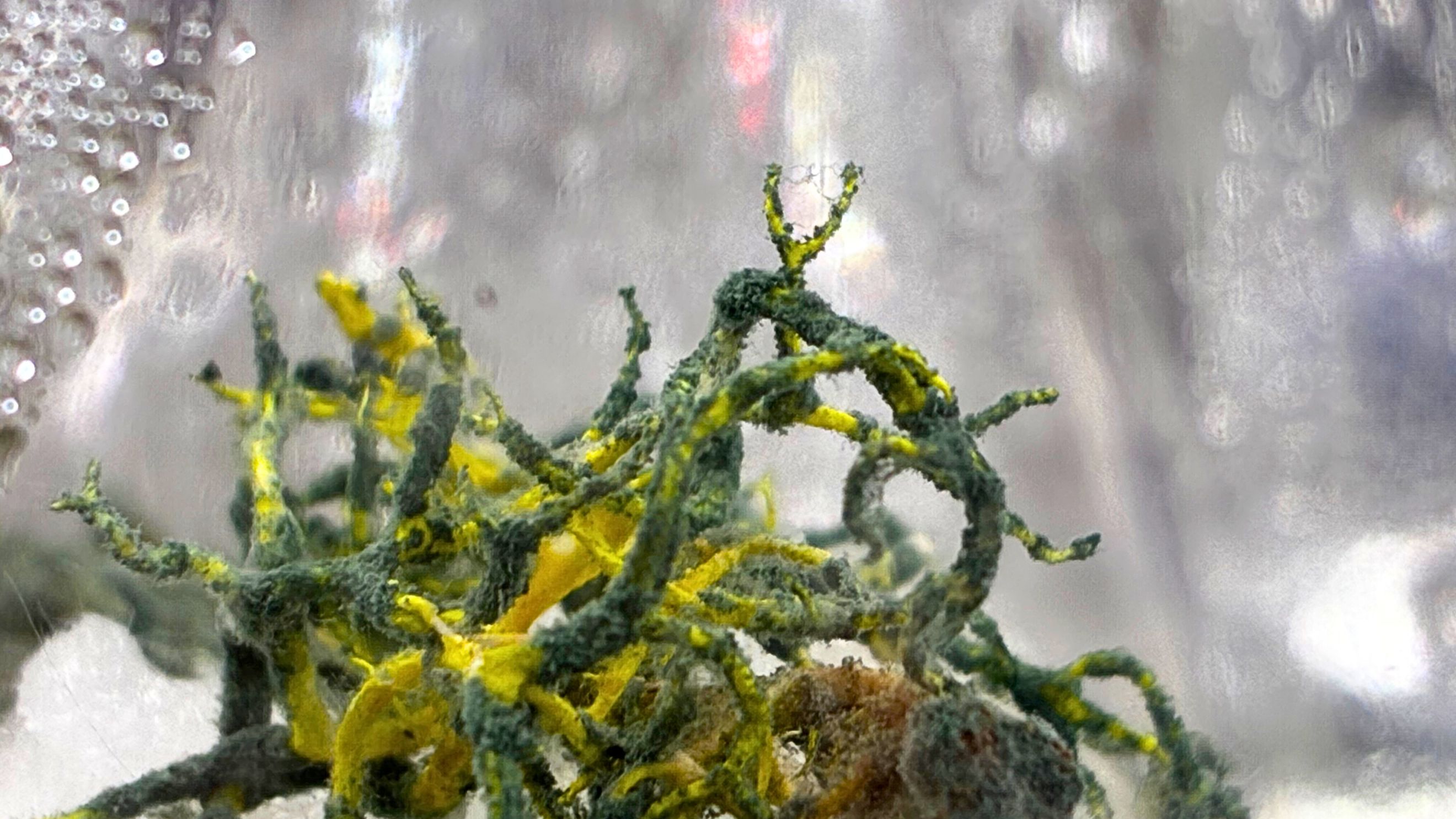Discovery
I’m calling it Proto-Lichen — an entirely new form of symbiosis that, to my knowledge, has never been documented before. In this state, familiar lichen partners undergo a striking transformation: the fungus produces a mycelial network, while algae gather at the aerial tips to form a dry biofilm. Together, they reorganize into something beyond their ordinary cycle — not just another stage of one organism, but a wholly reprogrammed partnership.
Why It Matters
I call this a-temporal biology — biological states that lie outside the stable temporal cycles recognized by evolution.
Microbial intelligence can be viewed as three intertwined intelligences:
- Metabolic intelligence — acquiring and transforming energy from complex sources.
- Reproductive intelligence — cycles of renewal tied to circadian or seasonal rhythms.
- Immune intelligence — chemical and structural defenses against environmental threats.
This morphology is an example of metabolic optimization. It is not reproductive (no reproductive structures form). It is not immune (no secondary metabolites are produced under observed conditions). It is purely metabolically driven — pushing algal biofilm to the exposed surface where light and air are maximized.
To my knowledge, this has never been documented before in lichen. That uniqueness is profound. It suggests lichens can reorganize into architectures of life that evolution itself does not stabilize in nature.
This stage does not produce lichen metabolites — at least not under the conditions I’ve observed. That makes it clear this is not the final solution for harnessing lichen chemistry. But it is a crucial first step — a foundation to build on.
The Context
NASA’s recent discoveries of potential complex organics on Mars strengthen the case that life may be widespread in space and may have originated off Earth. If life carries a cosmic imprint, it may already be optimized for extremes — desiccation, radiation, vacuum, scarcity. Lichens are known champions of resilience. But a-temporal biology — the emergence of entirely new, undocumented symbiotic states — suggests life may hold hidden forms even better suited for survival in such environments.
This is not speculation. It is a reproducible observation of two organisms reorganizing into a form nature never stabilizes, yet one that thrives under careful cultivation. That makes it both a biological discovery and a potential astrobiological model — pointing toward the possibility of lichens one day serving as passive life-support systems in closed environments, sustaining balance without complex machinery.
The Vision
This is the foundation of AstroBiota. My work is pioneering Symbiology Engineering — the design and programming of multi-species systems that unlock resilience, adaptability, and new forms of intelligence.
By preserving, stabilizing, and reprogramming symbioses like lichens, we can build a living biobank of forms evolution itself does not normally permit. On Earth, this has implications for ecological resilience, medicine, and conservation. Beyond Earth, it points to a future where biology is not just preserved for space but actively adapted to it.
Donate
Help stabilize 100 native lichens from California as a living biobank. A modest $10,000 in early funding would secure this milestone — capturing genetics, symbioses, and hidden morphologies before they are lost.
